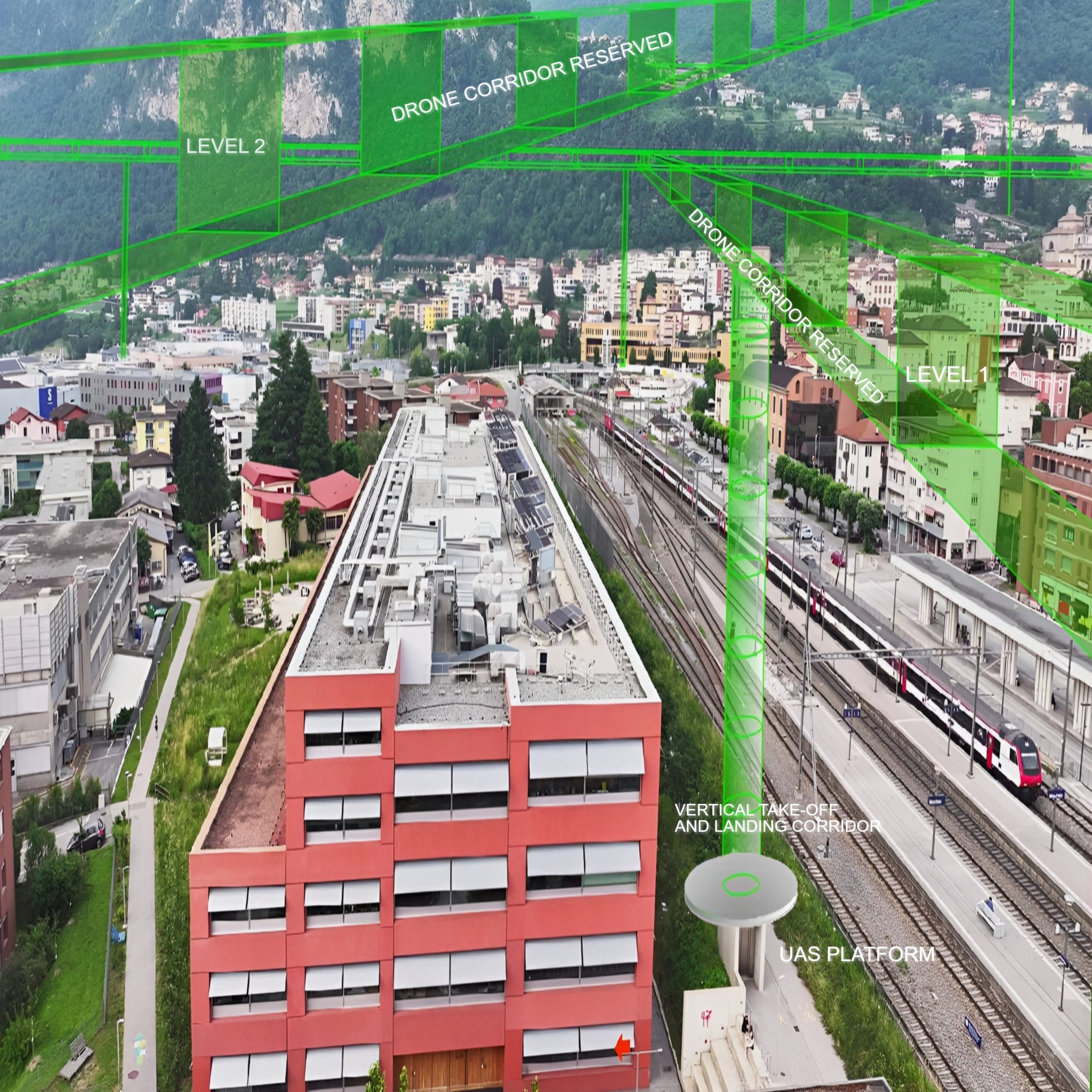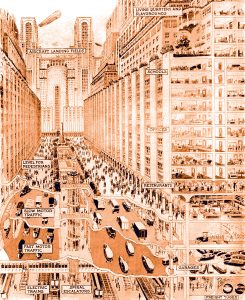In 1935, Frank Lloyd Wright anticipated the concepts of urban air mobility with his sketches of Broadacre City, introducing the idea of air corridors traversed by “aerotors” (Wright, 1935: 253), precursors to modern drones. This insight foreshadowed a decentralized and sustainable city where aerial technology would reduce road congestion and enhance accessibility.
Today, the U-SPACE initiative, supported by the European Union Aviation Safety Agency (EASA), revitalizes this vision. Defined as a well-defined geographic portion of airspace extending vertically up to 120 meters above the ground and horizontally beyond visual line of sight (BVLOS), U-SPACE serves as a passage or urban air corridor for the mobility of remotely piloted vehicles, ensuring the circulation of goods, people, services, and also supporting recreational and artistic practices.
The presentation explores how this new aerial mobility could redefine urban architecture. Architects and urban planners are called to integrate this innovation through dynamic infrastructure nodes for monitoring air traffic, as well as landing and takeoff bases and vertiports that are seamlessly integrated into the urban fabric. Wright envisioned a city that is “nowhere or everywhere” (Wright, 1932: 32), anticipating an era where mobility extends through technological tools capable of connecting numerous locations from a distance and expanding the scope of exchanges beyond physical action. U-SPACE, along with NASA’s DRF project, aims to promote the air mobility of the future, realizing this idea by creating a network of urban centers interconnected by air arteries that facilitate transport, services, emergency interventions, and entertainment.
This new perspective challenges architects to rethink the city as an expanded, dynamic, and interconnected organism and to design sustainable and integrated solutions within the metropolitan and suburban fabric.
Bibliography
- Mitchell, W. J. (1996). City of bits: space, place, and the infobahn. MIT press.
- Vegetti, M. (2013). Filosofie della metropoli: spazio, potere, architettura nel pensiero del Novecento. Carocci Editore.
- Wright, F. L. (1935). Broadacre City: A new community plan. The Architectural Record, 4(Offset), 243-254.



